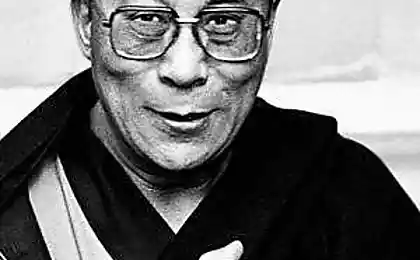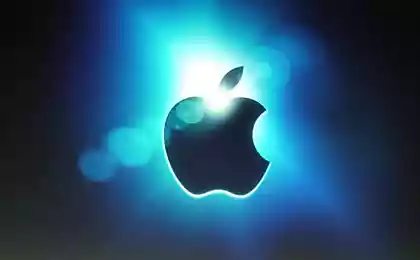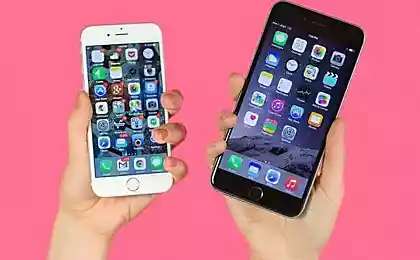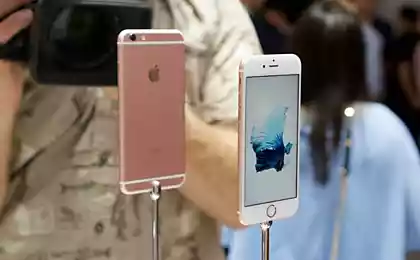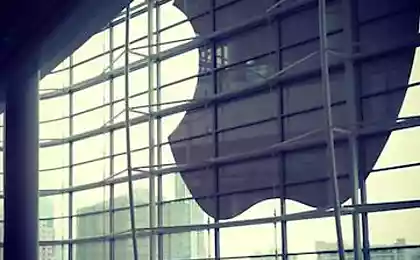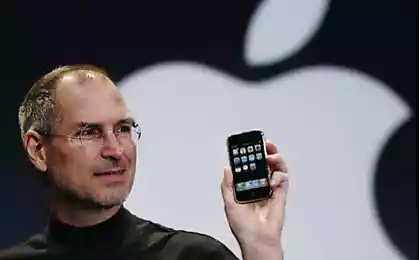910
Evolution of Apple
For three decades, publicized news from Apple have a great success among consumers, with only a couple of them turned out to be a failure. Let's look at the history of Apple.
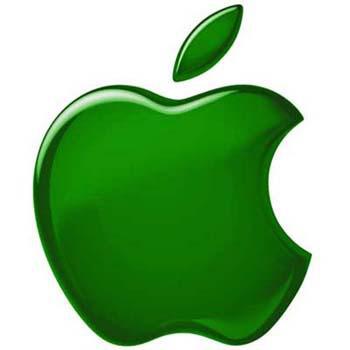

Apple 2, 1977. One of the first mass-produced personal computers Apple 2 had 4 KB of RAM, five-inch disk drive, and a monitor that shows images of green. In the photo we see the company's founder Apple Compute Inc. Steve Jobs. In 1977, he represented the new Apple 2 in Cupertino, Calif.

Macintosh 2, 1987. John Scully, a member of the board of directors of Apple Compute Inc., demonstrates a new Macintosh computer 2 in Los Angeles.
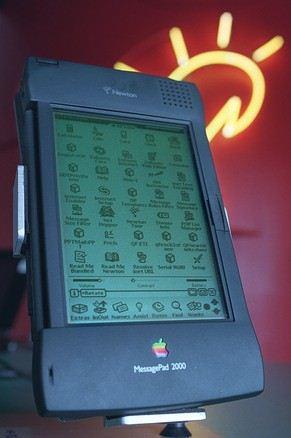
Newton MessagePad, 1993. It was an electronic organizer, who was able to recognize human handwriting. But it was cumbersome and expensive, and it was quickly removed from production.

Power Macintosh 6500, 1997. This new product from Apple sold well at the time. It was one of several computers Performa line from Apple.

iMac, 1998. This innovation was published in the times of the second rise of Apple's Steve Jobs control. He returned to the company in late 1996 and became interim CEO of the corporation in 1997. In the photo we see the visitors electronics in Tokyo, who curiously consider colored iMac.
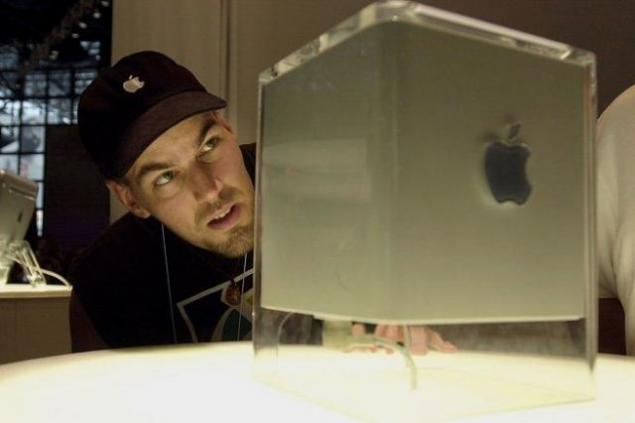
G4 Cube, 2001. This invention is a small personal computer in the form of a cube, which was sold without a monitor. Despite the innovative design, many considered this product is too expensive and low-power. Many also complained that the body quickly crack. Apple took the model out of production in 2001.

iPod, 2001. The first iPod users can download thousands of songs the nasty CD-quality on hard disk volume of 5 GB. Currently, iPod does not operate on a proprietary operating system of Apple, also uses a computer program music player iTunes.
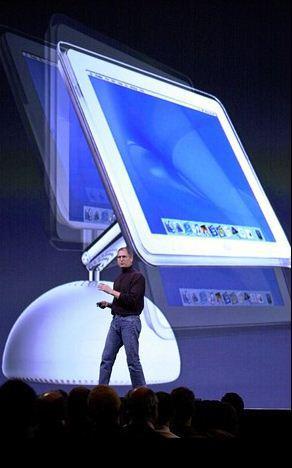
iMac, 2002. Steve Jobs introduced a new version of the iMac to San Francisco in 2002. The new improved model is equipped with technology that allows you to move the screen and the device to the DVD burner.

Shop iTunes, in 2003. Apple has opened the store iTunes, iPod users to make it easier to buy music online. Currently, the store offers customers more than 200 thousand songs for 99 cents per download, which is approximately $ 10 for the album.

iPod Mini, 2004. Apple aimed to expand its share of the growing market for digital music players. In 2004, the company issued a smaller and cheaper version of its iPod.

iPhone, 2007. This device combines the functions of a mobile phone and iPod with e-mail, video, games and wireless internet.

MacBook Air, 2008. This model is sold as the thinnest laptop in the world. It weighs about 1, 3 kg and its thickness is only a few centimeters. In the photograph we see Mr. Jobs, who will present the company's latest product.

iPad, January 2009. This model was developed in an attempt to blur the line between laptops and smartphones. iPad combines all the functions of a smartphone with a more "friendly" relationship with the Internet. The thickness of the device 1, 5 cm, and the diagonal of its screen 9 is equal to 7 inches

iPhone 4 for Verizon, 2011. Despite the fact that the popular smartphone AT & T was released in 2010, Verizon users could buy it only from 10 February 2011. In the photo we see buyers shop in Beachwood, Ohio, to pay for purchases.

iPad 2 2011. Workers paste the Apple logo on the wall Art Yerba Buena Center in San Francisco. The photo was taken on Monday. Today, Wednesday 2 March, representatives of Apple will hold a presentation here of the new iPad 2.


Apple 2, 1977. One of the first mass-produced personal computers Apple 2 had 4 KB of RAM, five-inch disk drive, and a monitor that shows images of green. In the photo we see the company's founder Apple Compute Inc. Steve Jobs. In 1977, he represented the new Apple 2 in Cupertino, Calif.

Macintosh 2, 1987. John Scully, a member of the board of directors of Apple Compute Inc., demonstrates a new Macintosh computer 2 in Los Angeles.

Newton MessagePad, 1993. It was an electronic organizer, who was able to recognize human handwriting. But it was cumbersome and expensive, and it was quickly removed from production.

Power Macintosh 6500, 1997. This new product from Apple sold well at the time. It was one of several computers Performa line from Apple.

iMac, 1998. This innovation was published in the times of the second rise of Apple's Steve Jobs control. He returned to the company in late 1996 and became interim CEO of the corporation in 1997. In the photo we see the visitors electronics in Tokyo, who curiously consider colored iMac.

G4 Cube, 2001. This invention is a small personal computer in the form of a cube, which was sold without a monitor. Despite the innovative design, many considered this product is too expensive and low-power. Many also complained that the body quickly crack. Apple took the model out of production in 2001.

iPod, 2001. The first iPod users can download thousands of songs the nasty CD-quality on hard disk volume of 5 GB. Currently, iPod does not operate on a proprietary operating system of Apple, also uses a computer program music player iTunes.

iMac, 2002. Steve Jobs introduced a new version of the iMac to San Francisco in 2002. The new improved model is equipped with technology that allows you to move the screen and the device to the DVD burner.

Shop iTunes, in 2003. Apple has opened the store iTunes, iPod users to make it easier to buy music online. Currently, the store offers customers more than 200 thousand songs for 99 cents per download, which is approximately $ 10 for the album.

iPod Mini, 2004. Apple aimed to expand its share of the growing market for digital music players. In 2004, the company issued a smaller and cheaper version of its iPod.

iPhone, 2007. This device combines the functions of a mobile phone and iPod with e-mail, video, games and wireless internet.

MacBook Air, 2008. This model is sold as the thinnest laptop in the world. It weighs about 1, 3 kg and its thickness is only a few centimeters. In the photograph we see Mr. Jobs, who will present the company's latest product.

iPad, January 2009. This model was developed in an attempt to blur the line between laptops and smartphones. iPad combines all the functions of a smartphone with a more "friendly" relationship with the Internet. The thickness of the device 1, 5 cm, and the diagonal of its screen 9 is equal to 7 inches

iPhone 4 for Verizon, 2011. Despite the fact that the popular smartphone AT & T was released in 2010, Verizon users could buy it only from 10 February 2011. In the photo we see buyers shop in Beachwood, Ohio, to pay for purchases.

iPad 2 2011. Workers paste the Apple logo on the wall Art Yerba Buena Center in San Francisco. The photo was taken on Monday. Today, Wednesday 2 March, representatives of Apple will hold a presentation here of the new iPad 2.


